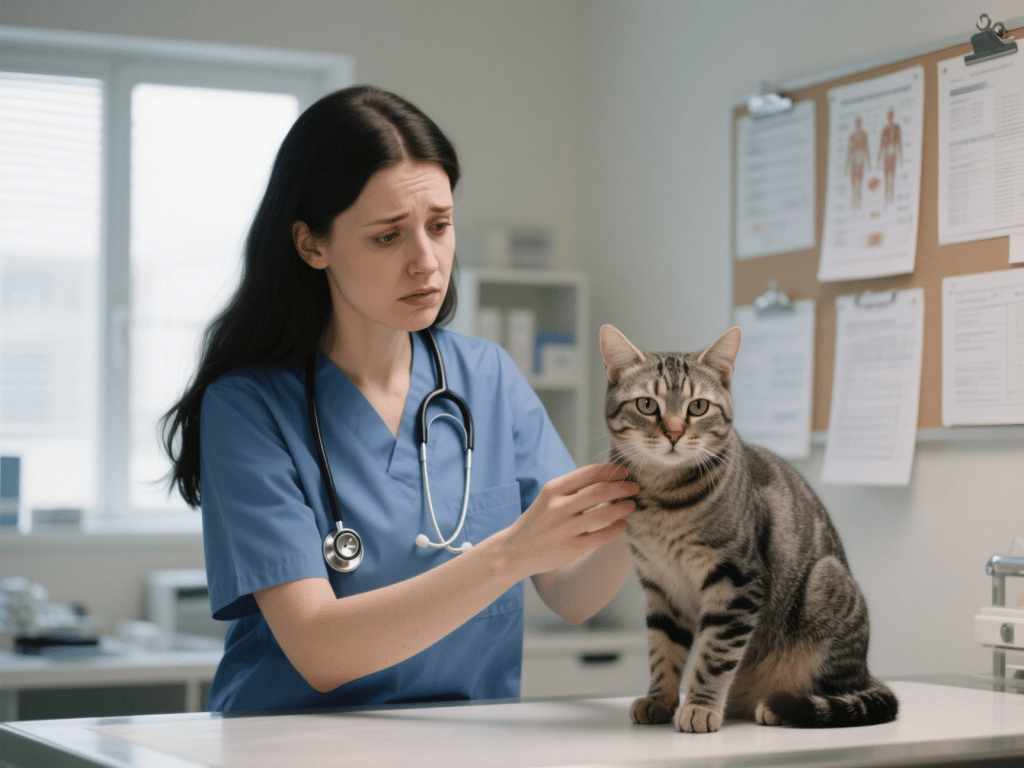Recognizing and Responding to Heatstroke in Dogs and Cats
Introduction
Heatstroke in dogs and cats is a life-threatening condition occurring when body temperature exceeds normal regulation, typically above 104°F (40°C). Rapid intervention can prevent organ damage and death. This guide covers how to recognize early warning signs and administer first aid until veterinary care is available.
1. Risk Factors
High Environmental Temperatures: On hot summer days (90°F/32°C+), animals left outdoors or in vehicles are at greatest risk.
Humidity: Increased humidity hinders evaporative cooling, making panting less effective.
Brachycephalic Breeds: Pugs, Bulldogs, and Persian cats have shorter airways that impede heat dissipation.
Obesity and Age: Overweight, senior, or very young pets struggle to regulate body temperature efficiently.
Non-Active Pets During Heat: Even inactive pets can overheat if left in confined, unventilated spaces.
2. Recognizing Early Signs
Excessive Panting or Drooling: Rapid, heavy panting—sometimes with open-mouth breathing—and thick, droopy saliva are early indicators of overheating.
Bright Red or Pale Gums: Check your pet’s gums. Red, inflamed tissues suggest high body temperature; pale gums can indicate poor circulation.
Unsteady Gait or Collapse: Weakness, stumbling, or fainting signifies progressing heatstroke.
Vomiting or Diarrhea: Gastrointestinal distress can accompany severe overheating.
Behavioral Changes: Restlessness, disorientation, and irritability may hint at rising body heat.
3. Immediate First Aid Steps
Move to a Cooler Area: Quickly transport the pet indoors or into the shade to reduce environmental heat exposure.
Cool Water Application: Use cool (not ice-cold) water to dampen ears, belly, and paw pads. Avoid cold shock—aim for gradual cooling.
Hydration: Offer small amounts of lukewarm water. Avoid forcing large gulps, which could induce vomiting or aspiration.
Cool Towels or Fan: Place damp towels on shoulders, neck, and under the front legs. Position a fan or create a breeze to facilitate evaporative cooling.
Monitor Body Temperature: If possible, use a rectal thermometer. Target a gradual reduction to 103°F (39.5°C). Once reached, remove wet towels to prevent overshooting.
4. When to Seek Veterinary Care
Temperature Above 105°F (40.5°C): Immediate veterinary treatment is essential.
Persistent Symptoms: If panting, weakness, or vomiting continues after initial cooling measures, transport to the clinic.
Neurological Signs: Seizures, unresponsiveness, or disorientation signify severe heatstroke and possible brain damage.
5. Veterinary Treatment
Intravenous Fluids: Correct dehydration and support circulation.
Electrolyte Monitoring: Blood tests check for imbalances and organ function.
Medications: Anti-shock therapy, sedation (if seizures occur), and gastric protectants to prevent ulceration from stress.
Oxygen Therapy: In cases of respiratory distress or severe hypoxia.
Hospitalization: Continuous monitoring of organ function (kidney, liver) is crucial.
6. Prevention Strategies
Avoid Peak Heat Hours: Walk pets early in the morning or late evening when temperatures are cooler.
Provide Shade & Fresh Water: Ensure available shade and multiple water bowls, especially outdoors.
Never Leave Pets in Cars: Even with windows cracked, interior temperatures can reach 120°F (49°C) within minutes.
Cooling Mats & Fans: Place pet-specific cooling mats in resting areas and use fans to circulate air.
Recognize Personal Limits: Brachycephalic, overweight, or elderly pets require extra caution.
Conclusion
Heatstroke in dogs and cats is a medical emergency requiring swift response. By recognizing early signs—excessive panting, disorientation, vomiting—and providing immediate cooling and hydration, owners can significantly reduce mortality risk. Always follow up with veterinary care to address complications and ensure full recovery. Preventive measures, such as scheduling outdoor activities during cooler times and providing shade and water, are essential for protecting pets in hot weather.









Comments on "Recognizing and Responding to Heatstroke in Dogs and Cats" :